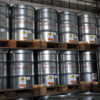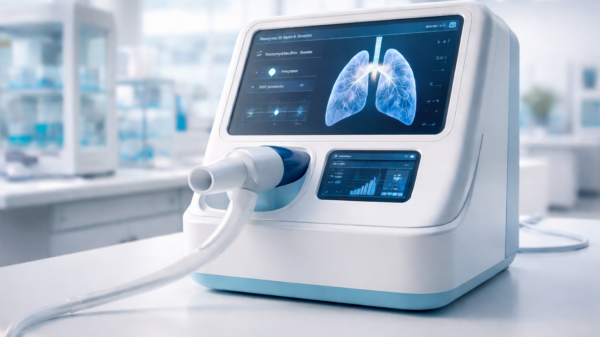The lung cancer survival rate has improved significantly, increasing by 26 per cent over the past five years, but only 25.8 per cent of cases are diagnosed at an early stage, according to a new report from the American Lung Association.
The American Lung Association’s State of Lung Cancer report, released annually, provides a detailed analysis on the burden of the disease across different states in the U.S. It focuses on key indicators such as incidence, survival rates, stage at diagnosis, treatment received, and screening efforts.
Recommendations for annual low-dose CT scans for high-risk individuals aim to enhance early detection, but only 16.0 per cent of eligible individuals underwent screening in 2022.
This low uptake indicates a missed opportunity to prevent lung cancer deaths. Surgical treatment is one of the most effective options for the early-stages of the disease, and has seen a slight decrease in rates. This development is likely due to disruptions in medical care caused by the COVID-19 pandemic.
Nationally, 20.9 per cent of lung cancer cases received no treatment following diagnosis.
Factors such as patients’ health status, limited access to care, and knowledge gaps among patients and providers may contribute to this issue.
Additionally, persistent racial disparities continue to affect outcomes, with people of colour less likely to receive early diagnoses, undergo surgical treatment, or survive five years post-diagnosis compared to white individuals.
The report also reveals that only 15 states mandate insurance coverage for comprehensive biomarker testing, while most states and Washington, D.C. lack any such requirement, limiting access for patients.
Read more: GRAIL uses lung cancer blood test to determine who needs post-surgery therapy most
Read more: Korean consortium propels lung cancer drug development with AI, supercomputers
Over 131M Americans live in areas subject to heavy air pollution
The report also speaks to the importance of radon testing and mitigation.
Radon gas remains a significant risk factor for lung cancer. It displays that the percentage of indoor radon tests exceed the EPA action level in various states.
Furthermore, air pollution, particularly particle pollution, has been linked to the disease.
Over 131 million Americans live in areas receiving failing grades for air quality, as noted in the Lung Association’s “State of the Air” report, potentially contributing to incidents of the disease.
“More people with lung cancer are living longer, and that is something to celebrate. However, lung cancer is still the leading cause of cancer deaths in the U.S.,” said Harold Wimmer, President and CEO of the American Lung Association.
“This year’s ‘State of Lung Cancer’ report provides a path for states and the federal government to take to improve the lives of people living with this devastating disease. “
Wimmer calls increasing lung cancer screening rates and expanding biomarker testing are “enormous opportunities” to diagnose cancer at an earlier stage, and can lead to the best outcomes.
The report urges increased screening among high-risk individuals to improve early detection rates.
Advocates push for policies ensuring screening coverage, particularly through Medicaid, to address treatment and screening disparities. Efforts aim to enhance public and provider awareness of lung cancer risks and the benefits of early detection and treatment to reduce disease burden.
Stakeholders seek to close racial and ethnic gaps in outcomes through targeted outreach and policy changes. Preventive measures focus on reducing radon exposure and improving air quality to lower incidence of the disease.
Read more: Breath Diagnostics onboards new president and closes critical financing
Read more: Breath Diagnostics pioneers novel lung cancer breath test
Room for innovation in biomarker testing
The push for increased screening and policy support aligns with advancements in experimental biomarker-based detection technologies, offering innovative pathways to enhance early diagnosis.
Kentucky-based Breath Diagnostics, for example, developed the OneBreath test, which analyzes volatile organic compounds (VOCs) in exhaled breath to detect lung cancer biomarkers noninvasively.
Similarly, liquid biopsy technologies examine circulating tumor DNA (ctDNA) in a patient’s blood, providing a minimally invasive option for identifying specific genetic mutations or biomarkers. Integrating such technologies into screening programs could revolutionize early detection efforts, particularly when paired with supportive policies and public awareness initiatives.
.
joseph@mugglehead.com














